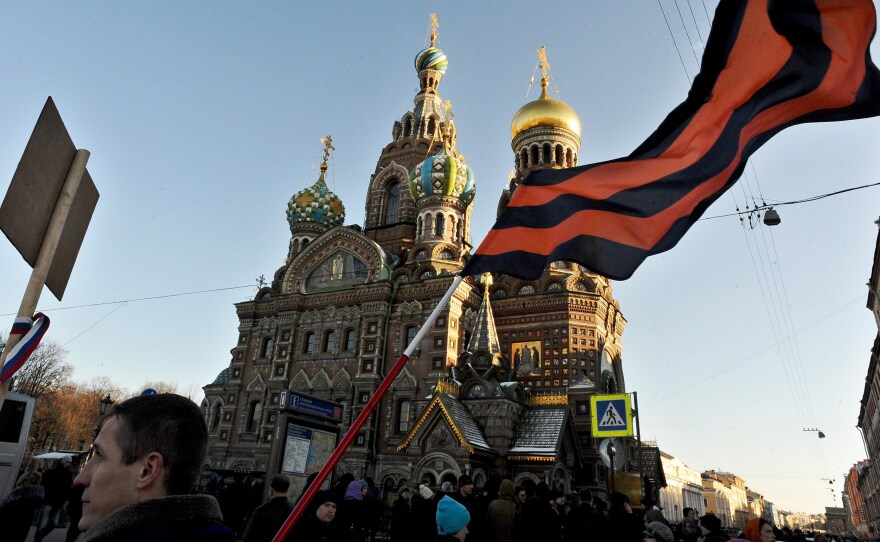It's hard to keep up with the vast array of colored ribbons that convey causes around the world, especially when the same color has multiple meanings. Red ones, for example, represent AIDS awareness but also drunk driving prevention, among other things.
Last week, deputies in the Russian parliament, or Duma, adopted their own ribbon to signal approval for Russia's takeover of Crimea – ones with black and orange stripes.
As The Moscow Times noted in a story Tuesday, it became "an almost obligatory accessory for ... pro-Kremlin patriots" as the government rallied support at home for its Ukraine policies. Despite widespread international condemnation, the decision to make Crimea part of the Russian federation passed 443-1.
As it turns out, this ribbon also has many different meanings and the lawmakers' use of it has sparked some backlash.
Some in Russia argue that it's wrong for the Kremlin to appropriate the historic ribbon for its own purposes. The Duma ribbon wearers were also lampooned by a well-known opposition figure — Alexei Navalny.
He wrote a blog post about "fat-faced deputies with St. George bows" and suggested they were protecting Crimea but not caring about the tough lives many Russians lead.
According to The Moscow Times, the St. George ribbon dates back to 1769, when Catherine the Great introduced it as part of the "Order of St. George," the highest military award in Imperial Russia and that the ribbon is one of the few symbols used both by the empire and Soviet Union.
Ribbon proponents reject the naysayers, however. Konstantin Kudryashov, who is the deputy general director of a Moscow-area company that makes the ribbon — Promo Lenta — tells NPR the Duma use of the ribbon is a "positive thing" in an era of post-Soviet malaise.
"After 1990, Russia lost part of its patriotism," he says. "And now there should be something that pulls people together. Let it be this ribbon."
He notes there hasn't been any increase in demand for the ribbon since the politicians began wearing them. But he and others say that in May, when Russians celebrate "Victory Day" commemorating the Soviet's defeat of Nazi Germany in World War II, millions of Russians will pin them on as they do every year.
Copyright 2014 NPR. To see more, visit http://www.npr.org/






